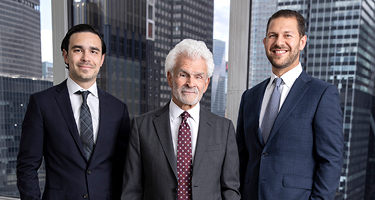Any lawyer expects the question, “How long will my personal injury case take to process?” Every country and jurisdiction possesses its own claims process—and Ontario is no different. By learning about the personal injury timeline in Ontario, lawyers can provide their clients with answers.
Unfortunately, every case is unique, meaning providing a precise answer is impossible. However, some clues can allow legal professionals to provide rough estimates. This guide discusses the factors influencing personal injury claim timelines.
Types of Ontario Personal Injury Claims
Firstly, the type of claim influences the timeline clients can expect. The most common types of personal injury cases in Ontario include:
- Car accident claims
- Slip and fall claims
- Catastrophic injury claims
The type of claim matters because it also defines the payout. An insurer isn’t going to court over a few thousand dollars, so most of the 36,736 workplace injuries in 2021 were settled out of court.
For example, Ontario offers three levels of no-fault accident benefits. Minor injury vehicle accident settlements average just $3,500, meaning these cases tend to be resolved via out-of-court settlements. On the other hand, catastrophic impairment settlements offer up to $1,000,000 payouts, meaning insurers are likely to be more amenable to a trial.
Ontario Personal Injury Claims Features
Any personal injury trial seeks to answer two key questions:
- Is the defendant liable for the personal injury?
- How much should be awarded in damages?
The first question is vital to any client’s timeline. If the circumstances are contentious, it’s not uncommon for personal injury trials to drag out for years. Thankfully, only 10-15% of personal injury claims result in court.
Instead, most are managed via Alternative Dispute Resolution (ADR). ADR comes in three flavors: negotiation, mediation and arbitration. Out-of-court settlements for personal injury are handled mainly by negotiation and can take mere weeks.
However, a personal injury lawyer can file a lawsuit and move to trial if no suitable offer is made. According to Grillo Law’s estimates, most trial dates in Canada are set two to three years in advance.
Let’s examine the personal injury lawsuit process for cases that go to court.
Initial Consultation
The process begins with an initial consultation. Both client and lawyer discuss the merits of filing a case, the lawyer’s responsibilities, timeline, potential awards and risks. It’s also an opportunity for the lawyer to delve into the case details, including the circumstances and the plaintiff’s injuries.
Filing a Claim
According to the Ontario Statute of Limitations, you must file a claim two years from the accident date. This occurs by filing a Statement of Claim through a lawyer, which is subsequently served to the defendant.
Discovery
Discovery is the most critical step in the process. During discovery, each side gathers the facts from the other to prepare their cases. Discovery helps to remove surprises that could make the claim take even longer.
Clients can expect their lawyers to accompany and advise them throughout every step as they ask and answer questions. In many cases, the results of the discovery phase can result in a settlement before the case goes before a judge.
If the case proceeds, the lawyer will file a Trial Record and attend Assignment Court two months later to set a trial date. At this stage, plaintiffs can expect a trial date 12-18 months after the Assignment Court hearing, plus a pre-trial three to six months before the actual trial.
The process is long and arduous, so the goal is to avoid a trial entirely. For example, in the Gordon v. Greig case, which resulted in a $23.7 million award, the accident occurred in 2003, but the actual award wasn’t decided until four years later.
What Factors Impact Ontario Personal Injury Claim Resolutions?
Ontario personal injury claim timelines often depend on factors outside of a lawyer’s control. Clients must be patient because highly complex and contentious cases can take years to resolve.
So, what factors impact the timeline?
Complexity
Contested cases are often complex, involving multiple parties, contrasting evidence, additional investigations and more. The most complex cases even involve drafting expert witnesses and ordering accident reconstructions.
Highly complex cases often lead to delays in obtaining evidence and disputes over its admissibility, which is why they can take years to resolve.
Willingness to Settle
Why do most personal injury claims never see the inside of a courtroom?
The answer is simple. Most claims represent comparatively small amounts. Insurers and businesses weigh the pros and cons of fighting a claim from a risk management perspective. With claims of a few thousand dollars, the time and expense involved outweigh settling the claim out of court.
Defendants willing to settle without a fuss can resolve a personal injury claim in a few weeks or months. Whether a defendant is liable to settle quickly depends on the risk profile and the numbers involved.
Filing Date
Under Ontario's statute of limitations, plaintiffs have two years from the date of the incident to file their claim. Law firms consistently warn people to consult a lawyer as soon as possible after an accident. This is not to drum up business but to reduce the actual claims timeline.
Filing immediately sets the wheels in motion. In contrast, waiting over a year to file means the timeline grows as memories fade and evidence becomes more challenging to come by.
FAQs
How Long Should an Ontario Personal Injury Case Take to Settle?
Every case is unique, meaning the timeline varies wildly. Many factors are outside of an individual lawyer’s control. This is why lawyers often cannot provide anything but a vague answer to this question.
Generally, most cases are resolved without a trial so that settlements can be hammered out in a few weeks to a few months.
How Much Do Lawyers Charge for Personal Injury Representation in Ontario?
Most lawyers operate on a contingency fee model, meaning they only get paid if they win. This alternative to hourly or upfront costs allows plaintiffs to fight their cases without being left out-of-pocket due to ongoing delays.
If the client wins, lawyers take a pre-agreed percentage from the settlement. If they lose, they pay nothing.
How Can Clients Speed Up the Personal Injury Claims Timeline?
Sadly, individual clients can do little to accelerate the timeline. Understandably, ongoing litigation can be stressful, especially if a client adjusts to life-changing injuries, but this is where hiring a compassionate and supportive lawyer comes into play.
Realistically, clients can only push their claims forward by filing immediately after the accident.
Conclusion: Confronting the Ontario Personal Claims Process
Multi-million-dollar personal injury claims can take years to decide, but this isn’t the reality for most cases. Most are handled out-of-court, enabling victims to move on as quickly as possible.
It’s understandable that clients can find the process stressful and confusing, so partnering with a trustworthy lawyer is invaluable.
For more than 30 years, Salvatore Grillo has been recognized for helping shape personal injury litigation in the Greater Toronto Area. He founded one of Toronto’s top personal injury firms, Grillo Law, in 1985 and has been establishing his reputation for success ever since. The peace of mind and satisfaction Grillo is able to provide to his clients is the fire that continues to fuel his ambition in the field.
































